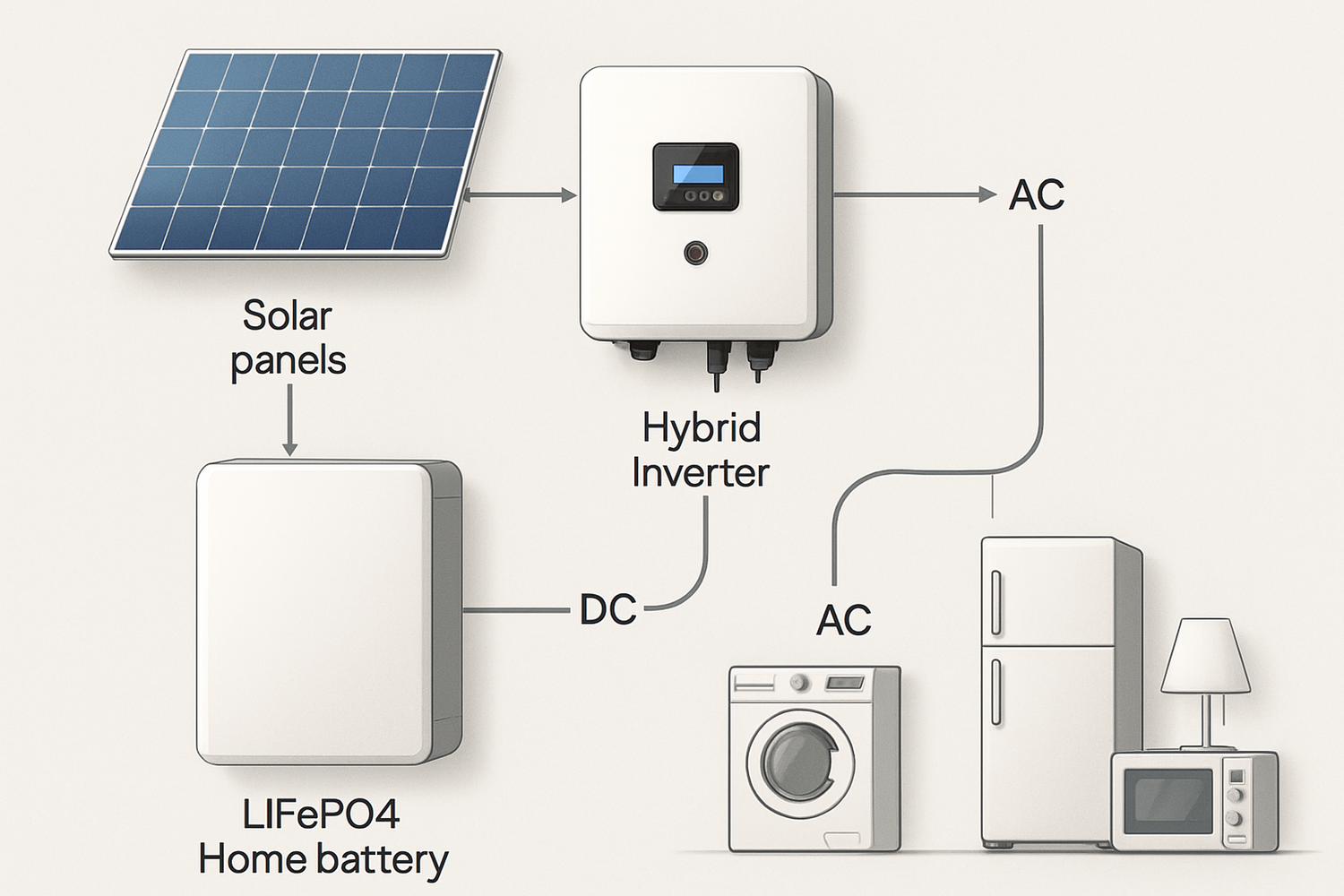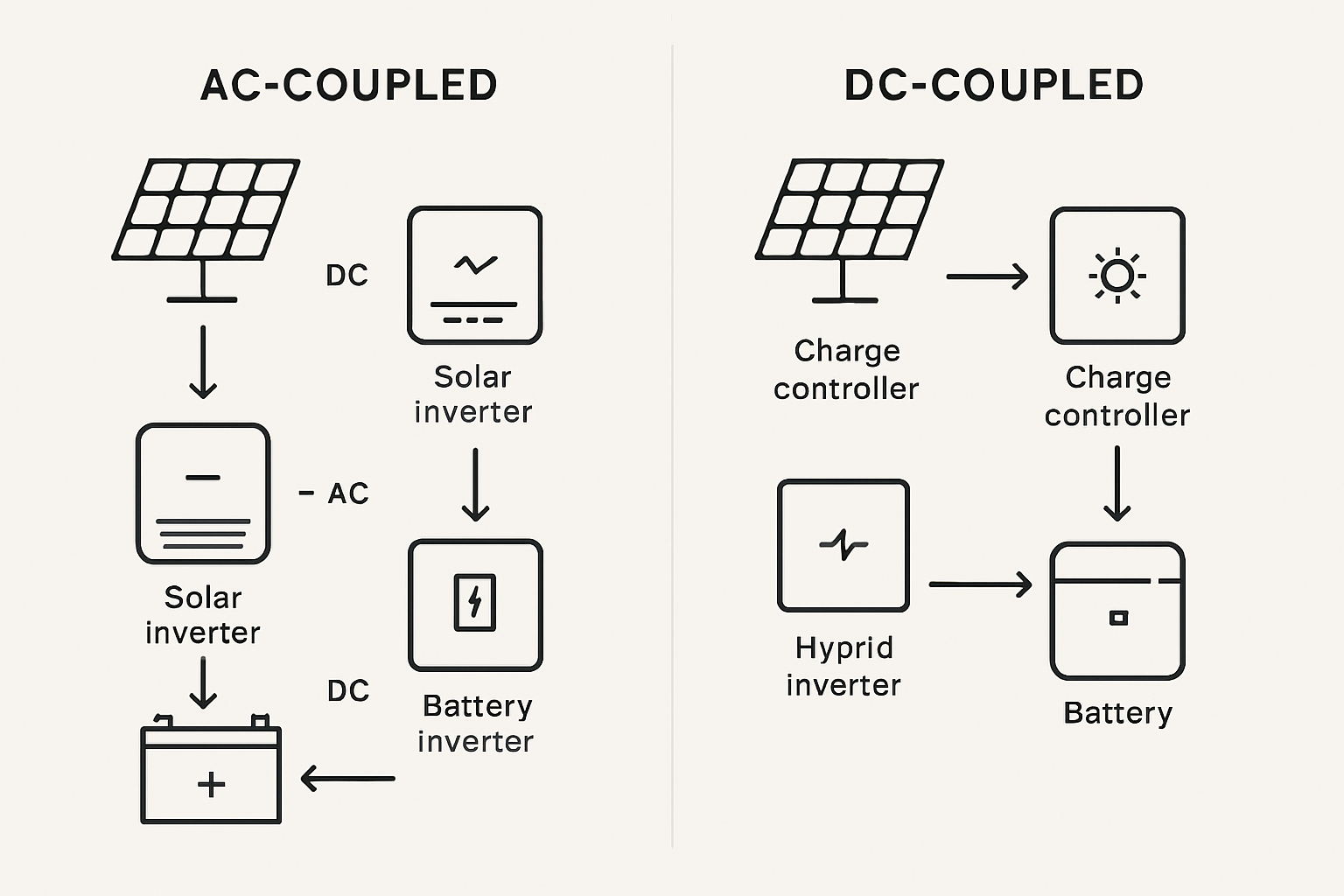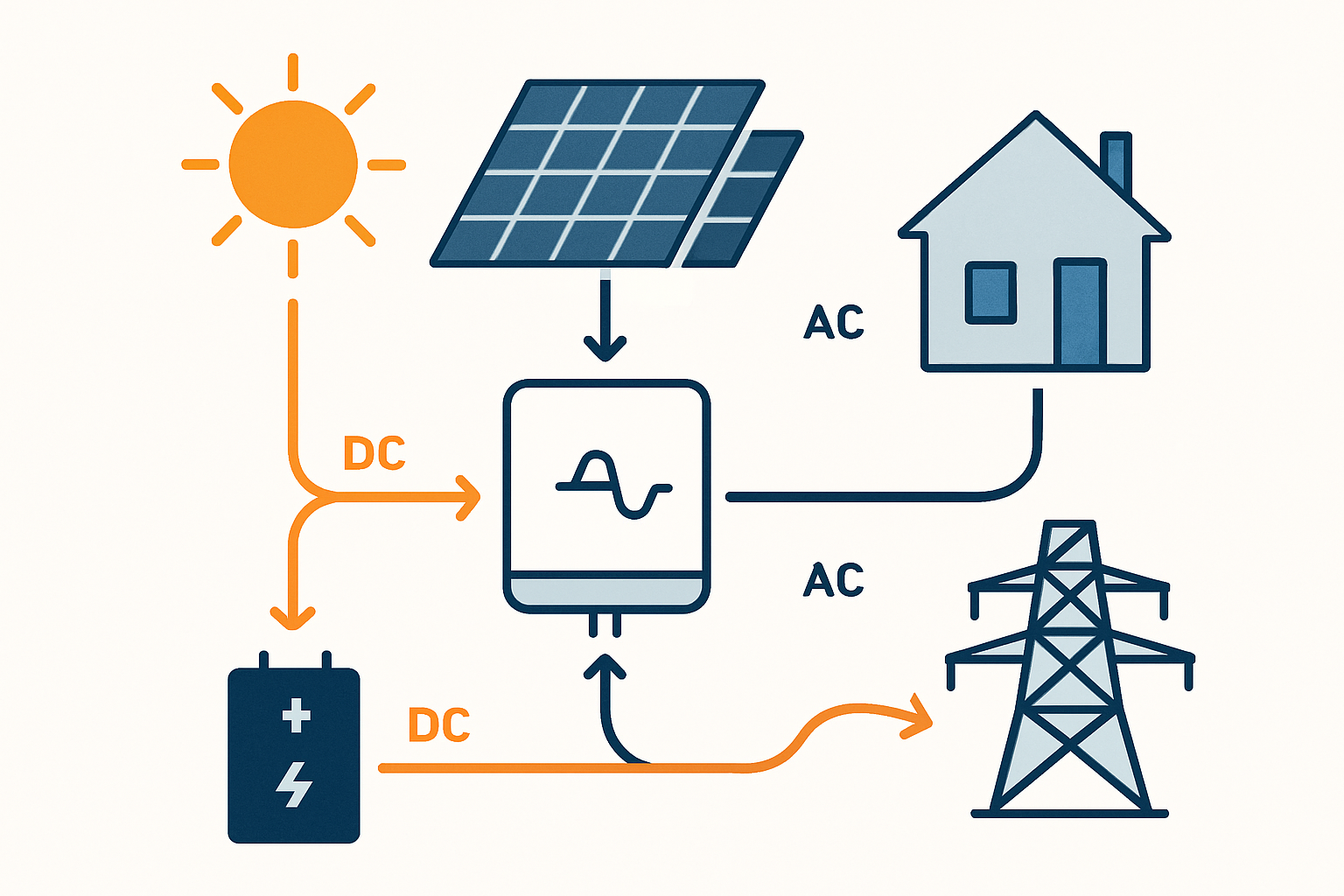Upgrading a home energy storage system is a significant step toward energy independence. Many homeowners are moving from traditional AC-coupled setups to more efficient DC-coupled systems to better utilize their solar power. This transition, which involves converting AC power back to DC for battery storage, unlocks greater efficiency but also introduces complexities. Avoiding a few common solar battery system issues can make the difference between a seamless, cost-effective upgrade and a problematic, expensive one.
Mistake 1: Improper System Sizing
One of the most frequent home battery upgrade mistakes is incorrectly sizing the battery and inverter. This isn't just about capacity; it's about creating a balanced system that meets your specific energy needs without waste.
The Problem with Mismatched Components
An undersized battery won't be able to power your essential appliances during an outage or store enough solar energy to get you through the night, leading to frequent deep discharges that shorten its lifespan. Conversely, an oversized system means you've invested in capacity you'll never use, resulting in a poor return on investment. The inverter must also be matched. If its power rating (kW) is too low, it can't run multiple high-draw appliances simultaneously, even if the battery (kWh) has ample energy stored.
How to Correctly Size Your System
A proper sizing analysis starts with your energy consumption. Review your utility bills for the past year to find your average daily usage. Next, identify your critical loads—the appliances you can't live without during a blackout. A scalable solution, such as a modular lithium battery pack, allows you to start with a capacity that meets your current needs while leaving room for future expansion. This approach ensures your investment remains valuable as your energy demands grow.
Mistake 2: Ignoring Inverter and Battery Compatibility
In an AC to DC battery storage conversion, the inverter and battery must work together flawlessly. Assuming any high-quality battery will work with any hybrid inverter is a recipe for inverter conversion errors and system failure.
The Technical Nuances of Integration
Modern energy storage systems rely on sophisticated communication between the inverter and the battery's Battery Management System (BMS). This communication, often using protocols like CAN or RS485, optimizes charging and discharging, monitors battery health, and ensures safety. If the components can't 'talk' to each other, you risk inefficient operation, premature battery degradation, or complete system shutdown. Voltage alignment is equally critical; the battery bank's DC voltage must fall within the inverter's specified input range.
Choosing Compatible Components
Always consult the manufacturer's approved compatibility list before purchasing. Reputable inverter manufacturers provide lists of batteries tested and confirmed to work with their products. High-performance batteries, like those using Lithium Iron Phosphate (LiFePO4) chemistry, have specific charging profiles. Pairing them with a compatible hybrid inverter ensures you benefit from their long lifespan and safety features. A well-integrated system provides reliable power and protects your investment.
| Factor | Description | Why It Matters |
|---|---|---|
| Voltage | The nominal DC voltage of the battery bank (e.g., 48V) must match the inverter's requirements. | A mismatch can prevent the system from operating or even damage components. |
| Communication Protocol | The language (e.g., CAN, RS485) the inverter and battery BMS use to communicate. | Ensures optimized charging, accurate monitoring, and enhanced safety. |
| Max Current | The battery's maximum continuous charge/discharge current must align with the inverter's capabilities. | Prevents overheating and ensures the system can handle peak power demands. |
Mistake 3: Neglecting Round-Trip Efficiency
The primary motivation for a DC-coupled battery installation is superior efficiency. Overlooking this metric means leaving money on the table every single day.
Understanding Energy Losses
Round-trip efficiency measures how much energy you get out of a battery for every unit of energy put in. In a retrofit AC-coupled system, solar energy is converted from DC to AC at the panel, then back to DC to charge the battery, and finally back to AC for home use. Each conversion loses energy, resulting in a typical round-trip efficiency of around 90%. A DC-coupled system is more direct: DC solar energy charges the DC battery with only one conversion to AC when your home needs power. This streamlined process boosts efficiency to 95% or higher.
The Financial Impact of Inefficiency
A 5% efficiency gain may not sound like much, but it adds up. As detailed in the ultimate reference for solar storage performance, higher efficiency translates directly into lower energy bills and a faster return on investment. Over a battery's 10- to 15-year lifespan, maximizing round-trip efficiency can result in thousands of dollars in savings by ensuring more of your generated solar power is used and less is wasted.
Mistake 4: Overlooking Safety and Compliance Standards
When dealing with powerful electrical systems, safety is non-negotiable. Using uncertified components or ignoring local codes is a dangerous and costly mistake.
The Importance of Certified Components
Look for components certified by Nationally Recognized Testing Laboratories (NRTLs). Key standards include UL 1973 for batteries and UL 1741 for inverters. The most crucial certification is UL 9540, which covers the entire energy storage system, ensuring all parts work together safely. Recent advancements like the UL 9540B test method specifically address fire safety in residential settings, providing another layer of protection. Using uncertified products can void your homeowner's insurance and poses a serious risk of fire or electrical failure.
Adhering to Local Electrical Codes
A professional installation is critical for compliance with the National Electrical Code (NEC) and local regulations. These codes dictate proper wiring, fusing, and ventilation requirements to prevent overheating and ensure safe operation. Proper installation by a certified professional guarantees that your system is not only efficient but also safe for your home and family.
Disclaimer: This information is for educational purposes only and does not constitute legal or financial advice. Always consult with a qualified professional for system design and installation.
Mistake 5: Poor Installation and System Integration
Even the highest-quality components will underperform if installed incorrectly. A successful AC to DC home battery storage system upgrade depends on meticulous installation and seamless integration.
Common Installation Errors
Simple mistakes during installation can lead to major problems. Using the wrong wire gauge can create a fire hazard, while poor connections can cause power loss and system faults. Another common error is improper placement. Installing a lithium battery system in an area with direct sun exposure or poor ventilation will cause it to overheat, reducing both its performance and lifespan.
The Value of Professional Integration
Hiring a certified installer ensures that every component is integrated correctly. A professional will not only handle the physical installation but also configure the system's software for optimal performance. They will ensure the inverter's charging parameters are set correctly for your specific LiFePO4 battery, maximizing its longevity and efficiency. This expertise is vital for a reliable, long-lasting energy storage solution that delivers on its promise of energy independence.
Achieving a Smarter Energy Future
Upgrading to a DC-coupled home battery storage system is a smart move toward greater efficiency and energy resilience. By avoiding these five costly mistakes—improper sizing, component incompatibility, ignoring efficiency, neglecting safety standards, and poor installation—you can ensure your system delivers maximum value. A well-planned and professionally installed upgrade provides not just backup power, but a reliable and scalable solution for a sustainable energy future.
Frequently Asked Questions
What is the main advantage of a DC-coupled system over an AC-coupled one?
The primary advantage is higher round-trip efficiency. Because DC-coupled systems involve fewer energy conversions between the solar panels, battery, and your home, less energy is lost in the process, maximizing the use of your solar power.
Can I use any lithium battery with my existing solar inverter?
No, compatibility is crucial. You must use a hybrid inverter designed for energy storage, and it must be compatible with your specific battery's voltage and communication protocol (BMS). Always check the manufacturer's compatibility list before purchasing.
How important is professional installation for a battery storage system?
It is essential. Professional installers ensure the system is sized and integrated correctly, adheres to all safety codes and standards, and is configured for optimal performance. This protects your investment, ensures safety, and maximizes the system's lifespan.





Leave a comment
All comments are moderated before being published.
This site is protected by hCaptcha and the hCaptcha Privacy Policy and Terms of Service apply.